
All aboard for a nostalgia-packed journey into the past when rattling and clanging trams ruled the roads between Leven and Kirkcaldy.
Wemyss and District Tramways operated a tramway service between 1906 and 1932, before buses became the area’s dominant form of public transportation.
The single-track line connecting small villages serving the mining district closed on January 30 1932 when the last tram trundled back to the depot without ceremony.
And with the trams gone, many commuters felt something magical had been lost.
Even buses running similar routes couldn’t replicate the experience.
Alan Brotchie has long been fascinated with the ghosts of transport past.
Wemyss Trams and Early Buses charts the story of the tramway, which was built by the Laird of Wemyss Castle to link the mining villages on his estate to Kirkcaldy.
Mr Brotchie has a long-standing interest in the development of passenger transport in Fife and published a book about the history of the Wemyss Tramway Company in 1976.
The 2023 book is much revised by accessing new information not in the public domain in 1976 while improving the photographic coverage which brings the book to life.
Like the dapper Victorian fashions of the “local great and the good” who attended the official opening at Coaltown of Wemyss on September 8 1906.
The photographs are accompanied by the author’s extensive, fact-filled captions, and these amazing images reveal a stark contrast between the past and modern day.
The history of the tramway
Wemyss Estate landowner, Randolph Wemyss, developed coal mines and fed the mines’ output through docks he developed at Methil via his Wemyss Private Railway in 1881.
Kirkcaldy’s municipally sponsored three-mile electric tramway, with 10 cars, opened for business on February 28 1903 and its success attracted the attention of Mr Wemyss.
Wemyss built housing for the miners and quickly grasped the benefits to his other enterprises from this ability to tap into an enhanced area for his workforce.
It was to be financed by the Wemyss Estate.
The Wemyss and District Tramways Act eventually became law on August 11 1905, after being granted formal permission for construction of just under eight miles of track.
During early September the first cargo of tramway rails and sleepers arrived at Methil Docks and were rapidly moved to be stockpiled along the tram route.
It ran through the villages as a street tramway, but the off-road lengths of track, of sleeper construction, were laid on ballast from boilers at the various collieries.
After construction, he handed the line over to the Wemyss and District Tramway Company.
Wemyss Coal Company was to own the power plant and supply the tramway while Bruce Peebles & Co, from Edinburgh, provided electrical equipment including the cars.
They covered the route, which linked Gallatown in Kirkcaldy with Leven via Coaltown of Wemyss, East Wemyss, Buckhaven, Denbeath and Methil from 1906 to 1932.
By agreement with Kirkcaldy Town Council, the trams were allowed to run on the corporation line into Kirkcaldy from 1906 to the start of 1917.
Public service commenced at 6.40am on Saturday August 25 at and the cars and their crews were almost overwhelmed with 4,000 tickets issued during the day.
The tramcars were nicknamed mustard boxes due to their shape and livery.
A celebratory opening lunch was hosted by Mr Wemyss and wife Lady Eva at Wemyss Castle on September 8 with 200 guests and representatives of those who built the line.
Over 53,000 people were carried in the fortnight since opening.
The tramway played a major part in the development of the communities it served.
Then tragedy struck.
Mr Wemyss assisted with underground rescue operations following the death of a miner at the Lochhead pit in 1907 and he suffered badly from shock and exposure.
Sadly, he grew weaker and died on July 17 1908.
Peaks and troughs for Wemyss tramway
The tramway operators were facing much greater challenges as the motor bus competed for passengers.
Some outfits were simply two guys — a driver and a conductor — and a vehicle.
Ironically, the First World War gave the tramway a stay of execution.
The tramway became an important part of the war effort, moving workers to their place of work or training camp, with passenger numbers reaching 3.6m in 1920.
It was a false dawn.
Bus competition generally was becoming ever more problematic.
The Wemyss Tramway Company bought the Caley Bus Company from Leven in 1925 to deal with one of the original operators — but the clock was already ticking.
On May 3 1926, Britain’s miners walked out over wage cuts, an act which spread to the first General Strike and transport services ceased completely for nine days.
A company meeting in March 27 recorded “unfavourable trading results” down from £22,198 to £14,427 due to the coal stoppage and “intensified omnibus competition”.
Mr Brotchie said: “This state of affairs put the future of the tramway, previously recognised as the backbone of the company’s operations, into severe doubt.
“Strenuous efforts continued to be made to reverse the situation with regard to the unregulated, unprincipled and unbridled bus pirating.
“The situation was recognised by the various local authorities, which, led by Fife County Council, introduced a compulsory bus licensing and regulatory requirement.
“Probably already too little, too late.”
It was.
In 1930 W Alexander & Sons acquired the operating rights within Kirkcaldy and purchased the Wemyss and District Tramways for £1.3m in today’s money.
Kirkcaldy trams were replaced by buses on May 15 1931, amid riotous scenes.
Mr Brotchie said little advance notice of the closure of the Wemyss line was given to avoid the riotous scenes which accompanied the closure of the Kirkcaldy trams.
The last Wemyss tram was to run on the final day of 1931.
A reduced service was run during January because the small cars were already being sold off as greenhouses.
All did not go entirely smoothly.
The disposal of three cars as hen-houses ended in court.
Mr Brotchie said: “For many years the old vehicles could be seen throughout East Fife.
“Of the workers’ cars, one became a men’s club house on the Ness Braes at Buckhaven, number 16 was an unusual ‘attraction’ at Falkland village, while number 14 was for many years a hen house at Blacketyside Farm between Leven and Lundin Links.
“There was an intention that this would be the subject of a preservation scheme, but this comprehensively failed when the owner put an end to matters by cremating it without further debate.
“Eventually Saturday January 30 1932 was intimated as the last day, with crowds gathering all along the route, but there was still no advice of the time for the final run.
“As the cold January evening wore on most people lost interest and wandered homewards — until, without warning or ceremony, the 10.15pm from Gallatown ran its journey to Aberhill only, reversed into the depot, becoming the unheralded final car.”
It had been anticipated Alexander’s would offer employment to tram employees.
Only seven people were retained.
Mr Brotchie said: “On that last day of operation no less than 4,282 passengers were carried, including 894 using worker’s fares.
“But only 14 tickets were issued for the end-to-end run.
“The company remained in existence – possibly to satisfy a legal obligation of the contract to transport miners at shift times – until wound up in July 1938.”
The distinctive rattle and hum was silenced forever.
These images survive as a reminder of the tram system’s brief life.
- Wemyss Trams and Early Buses from Stenlake Publishing is on sale now.
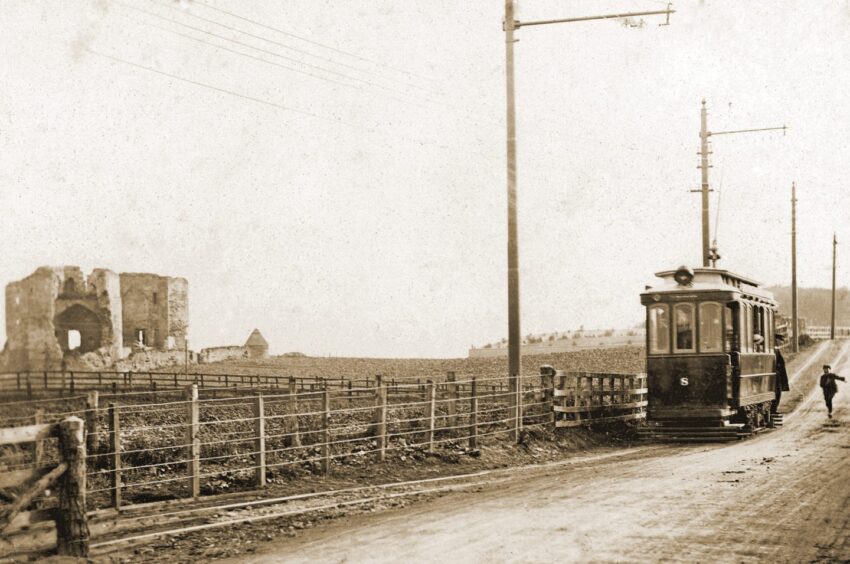
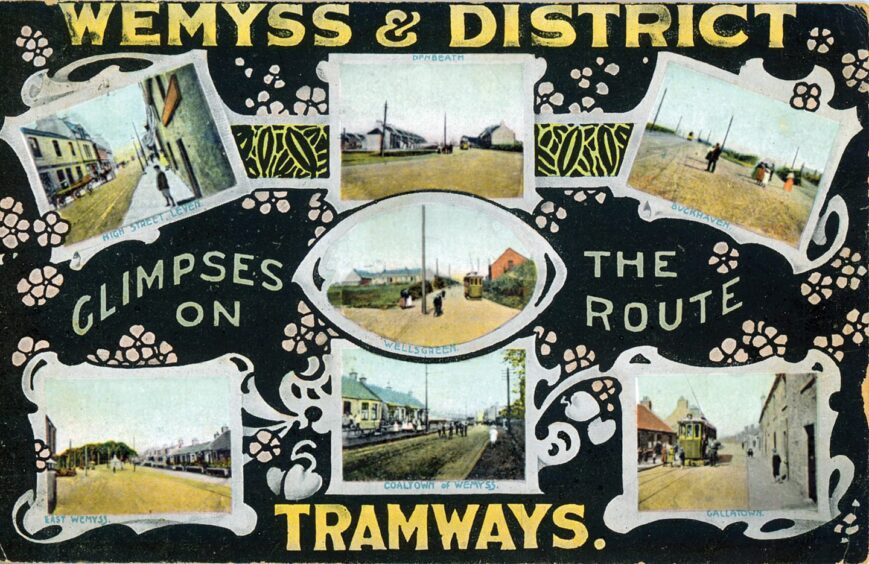
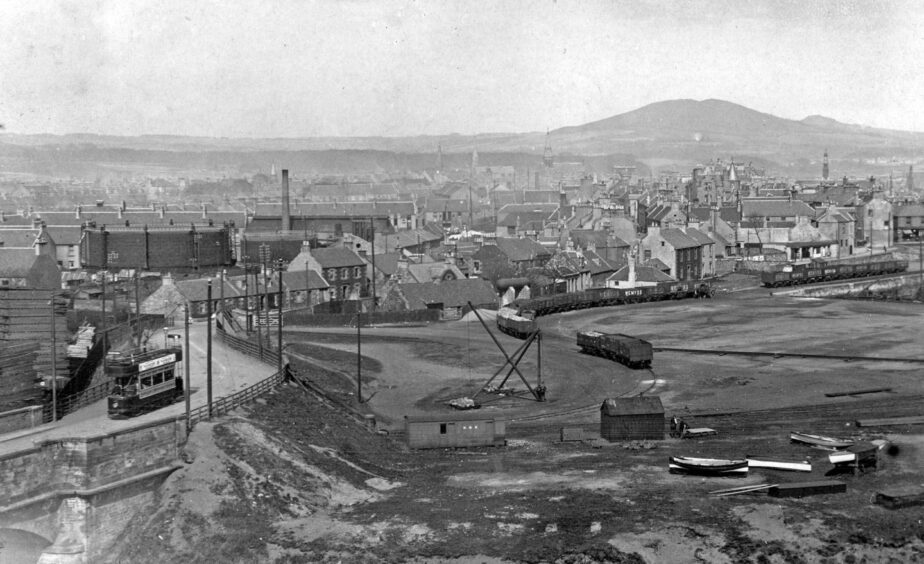
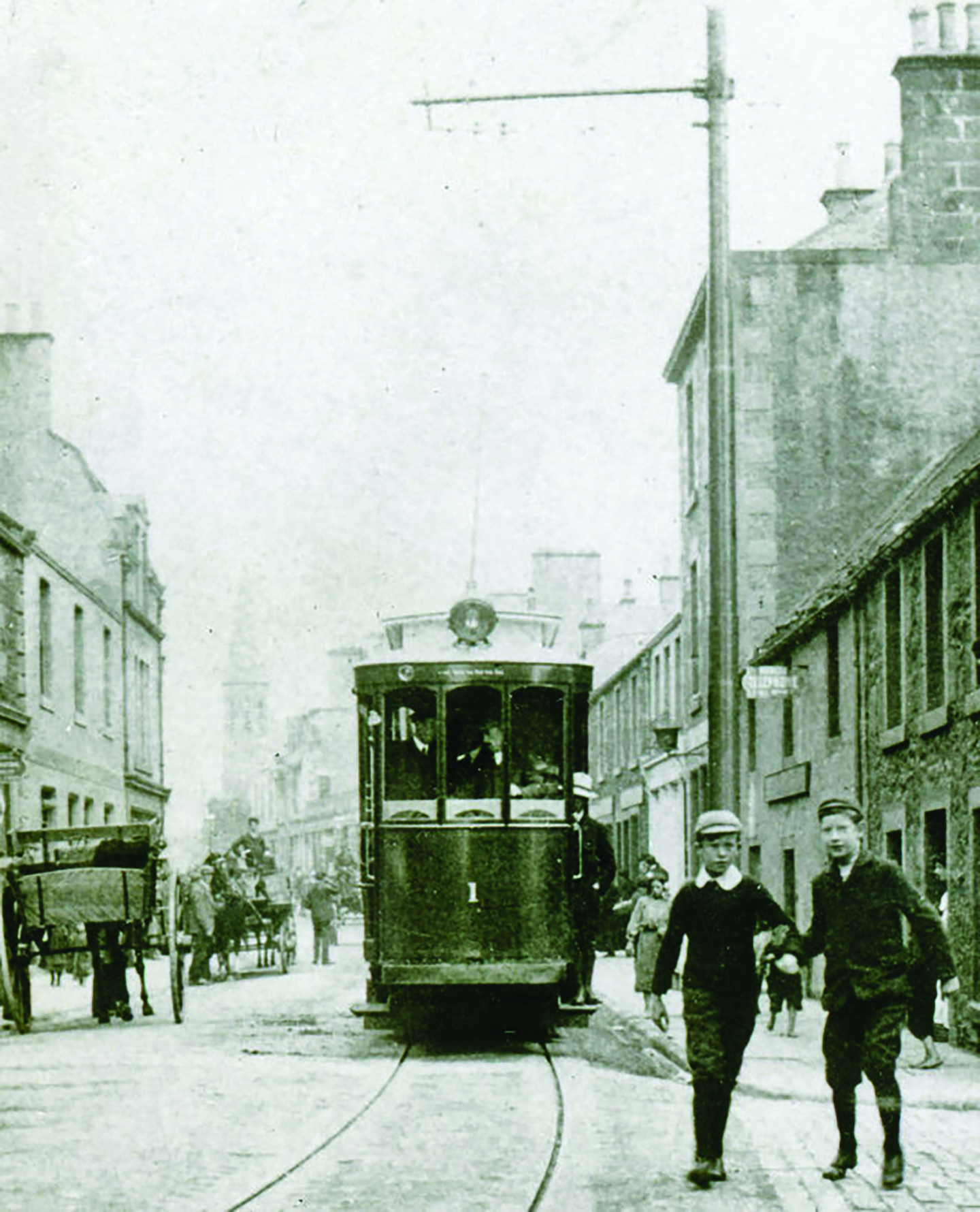
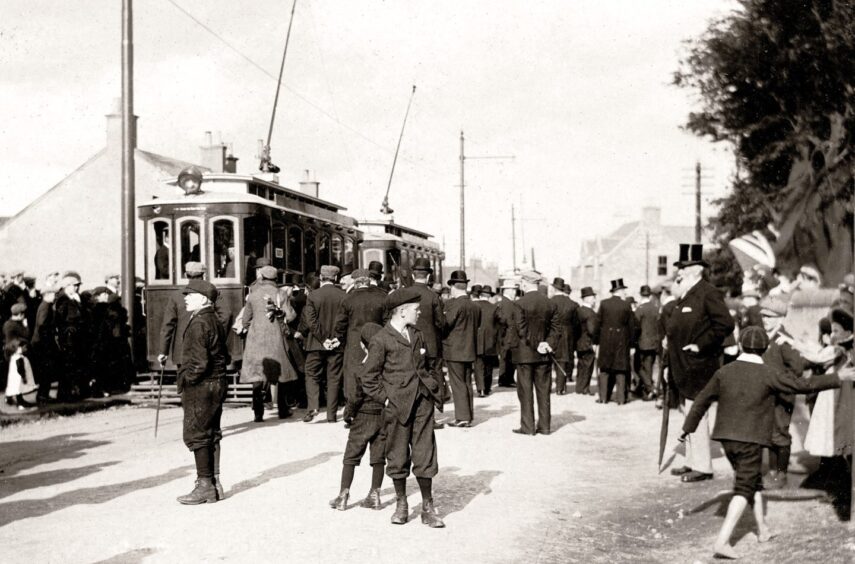
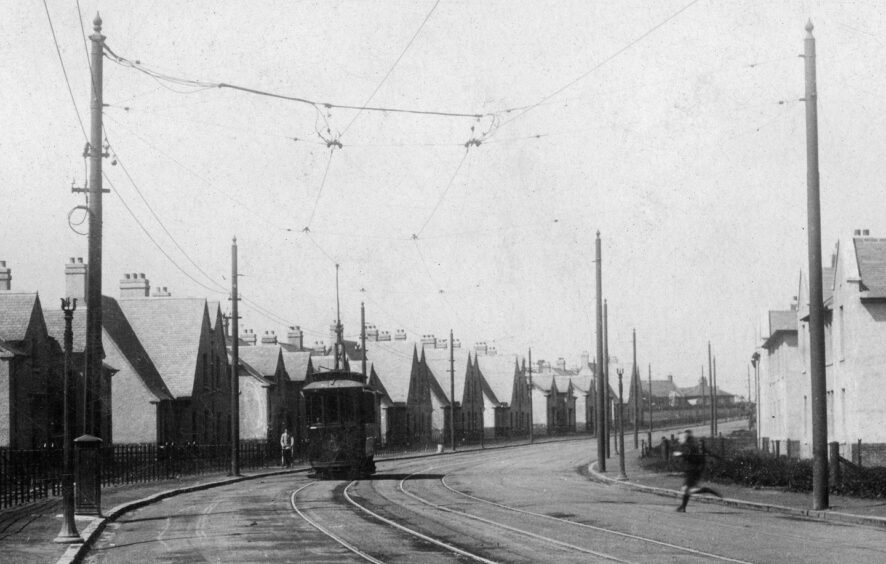
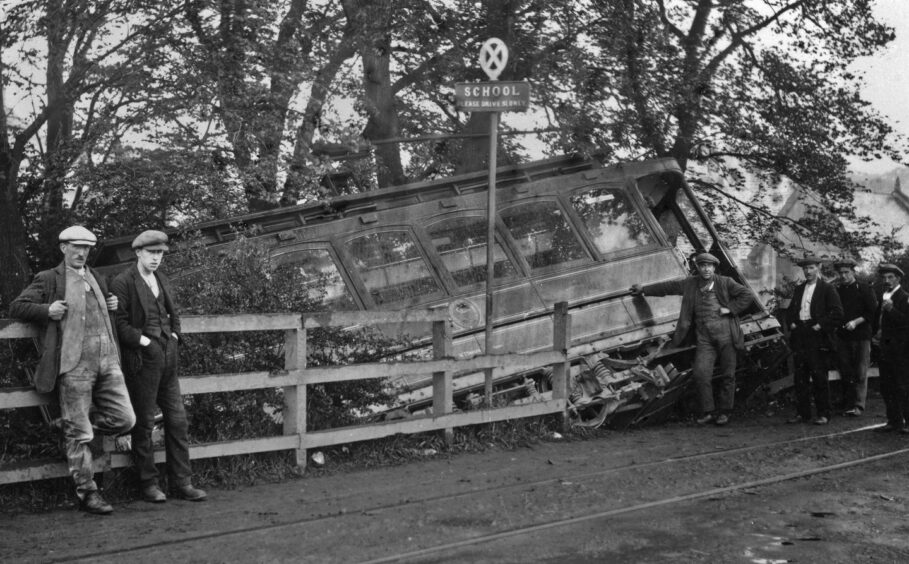
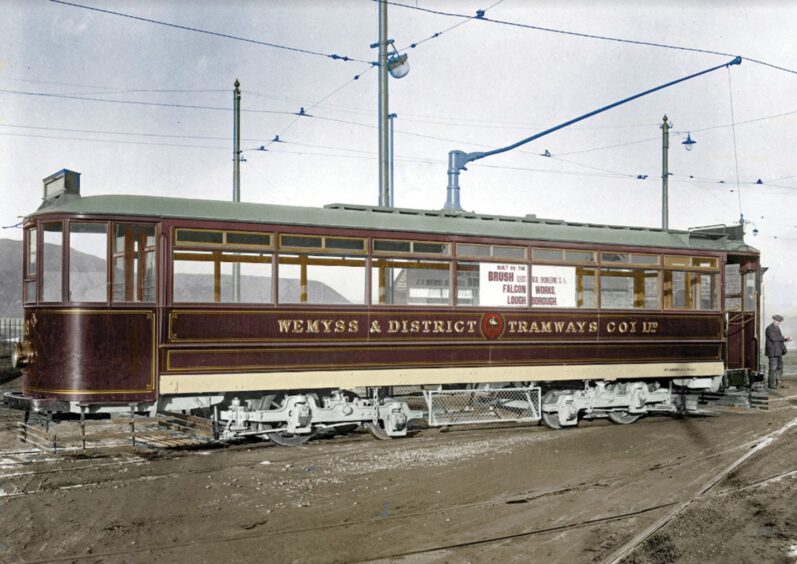
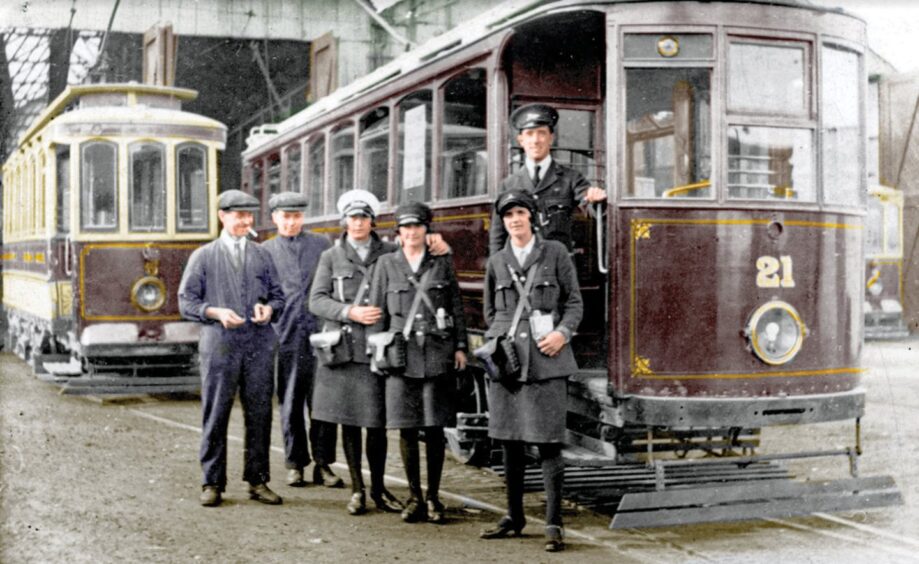
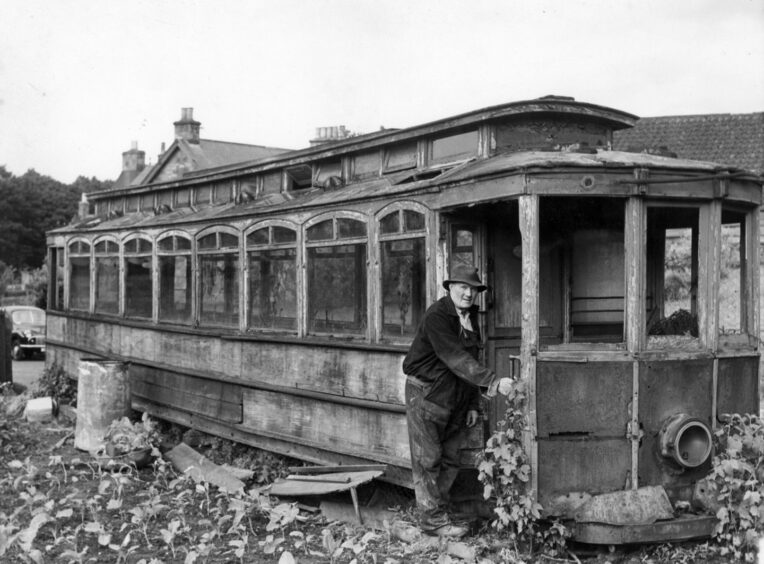
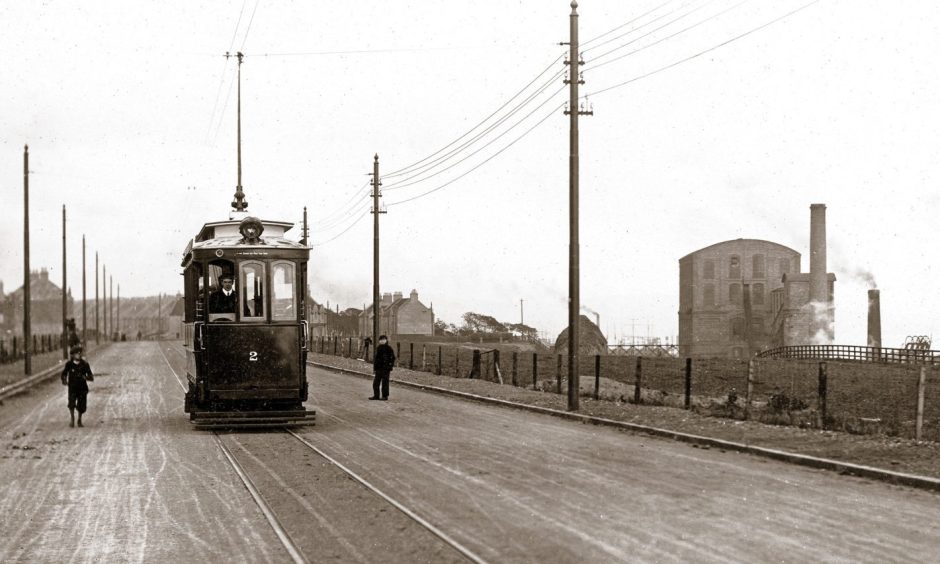










Conversation